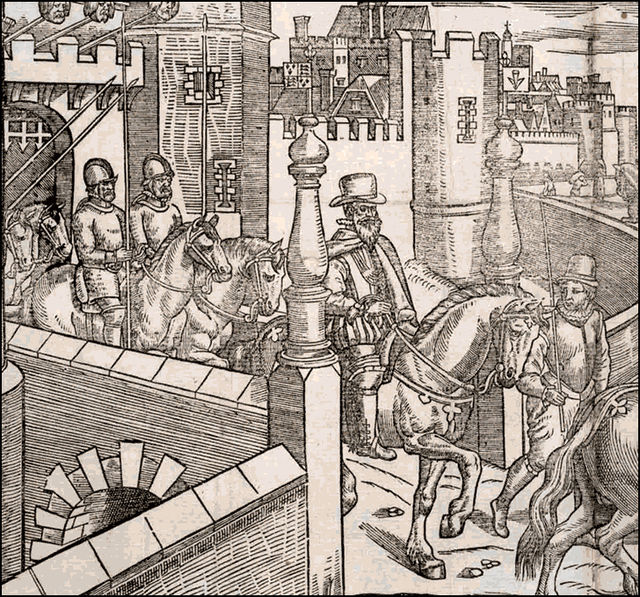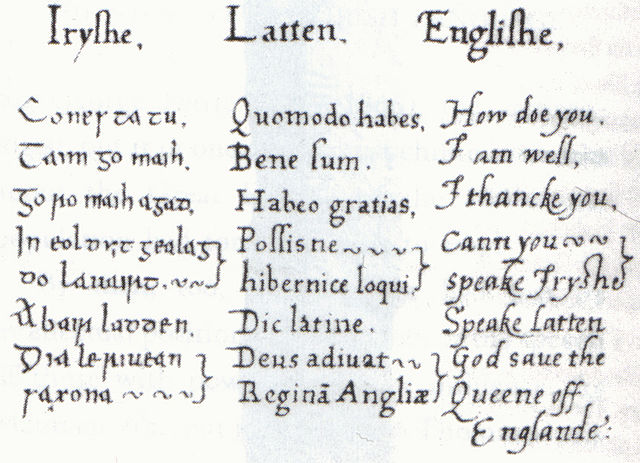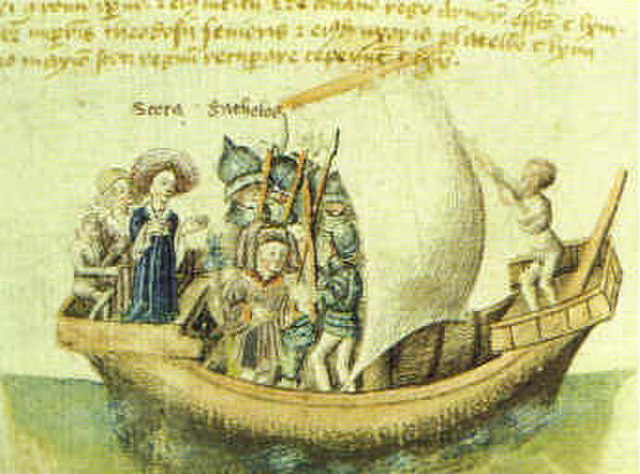Tudor conquest of Ireland
The Tudor conquest of Ireland took place during the 16th century under the Tudor dynasty, which ruled the Kingdom of England. The Anglo-Normans had conquered swathes of Ireland in the late 12th century, bringing it under English rule. In the 14th century, the effective area of English rule shrank markedly, and from then most of Ireland was held by native Gaelic chiefdoms. Following a failed rebellion by the Earl of Kildare in the 1530s, the English Crown set about restoring its authority. Henry VIII of England was made "King of Ireland" by the Crown of Ireland Act 1542. The conquest involved assimilating the Gaelic nobility by way of "surrender and regrant"; the confiscation and colonization ('plantation') of lands with settlers from Britain; imposing English law and language; banning Catholicism, dissolving the monasteries and making Anglican Protestantism the state religion.

Silken Thomas; his family the FitzGeralds had strong Yorkist leanings and he led a rising in Kildare against the Tudor monarchy of Henry VIII.
Henry Sidney, Lord Deputy of Ireland under Elizabeth I, sets out from Dublin Castle. Detail from a plate in The Image of Irelande, by John Derrick (London, 1581).
Multilingual phrase book compiled by Sir Christopher Nugent for Elizabeth I of England.
Hugh O'Neill, 2nd Earl of Tyrone
The Gaels are an ethnolinguistic group native to Ireland, Scotland and the Isle of Man. They are associated with the Gaelic languages: a branch of the Celtic languages comprising Irish, Manx and Scottish Gaelic.
The Emigrants, painting from 1844. This depicts a Highland Scots family in Gaelic dress migrating to New Zealand.
Scota and Goídel Glas voyaging from Egypt. From the 15th century chronicle the Scotichronicon.
The Lia Fáil at the Hill of Tara, sacred site of inauguration for the Gaelic High Kings.
A page from the 9th century Book of Kells, one of the finest examples of Insular art. It is believed to have been made in Gaelic monasteries in Ireland and Scotland.








